Using your home oven properly for baking macarons can help to avoid hollow, lopsided, browned or cracked shells. This post will go over different ways to set your home oven for baking colorful macarons.
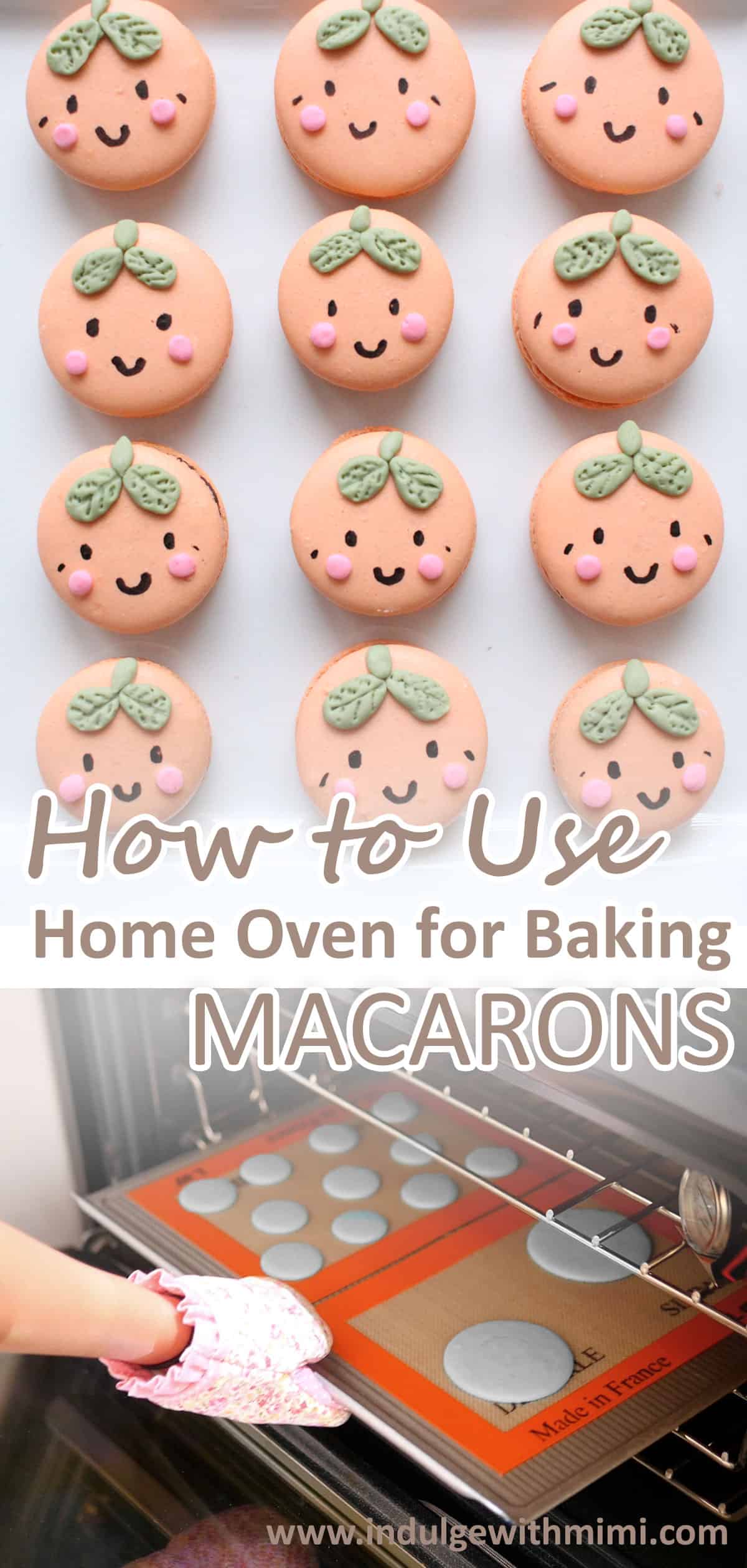
Jump to:
I wrote this post on correctly using your home oven for baking macarons because I found that there wasn't much information about how to use your home oven properly when baking macarons. Unlike spacious and sturdy commercial grade ovens with even heat distribution, home ovens can be temperamental and seem to need a lot of coddling.
For any home baker, it's very important to know their own oven well in order to achieve success with any recipe, even my Best Macaron Recipe will only get you so far in achieving perfect macarons if you don't know how to adjust your oven properly for baking macarons. You will need to experiment under different baking conditions like rack position, temperature and bake time to find the optimal conditions for successful baking. When you learn to trust your oven, it will love you back ♥
When I started making macarons, I was more concerned about feet development and just making sure that the macarons actually looked like macarons. Needless to say, I was not too picky back then. But as I baked more of them, I realized that all the faults like hollow shells, crispy over baked bodies etc. would actually manifest itself in its outer appearance. In other words, you are essentially showing the world all your macaron's faults just by its visual presentation. I started to demand more perfection from these little sweet treats.
Even when you follow a macaron recipe religiously, you can still end up with ugly or underdeveloped macarons simply because you used your oven incorrectly (READ: Macaron Troubleshooting Guide). Almost all the recipes I've come across only instructs to bake at a certain time and temperature on the middle rack. It drove me crazy when I ended up with overly brown or under cooked macarons. It led me to experiment with my oven in order to get my macarons just right.
Average Baking Time & Temperature for Macarons
I'm not claiming to have the exact solution for you because all ovens are different. Every baker should know their own oven well. This post highlights the different ways to adjust your own oven to perfect the baking process. You may need to use a combination of these adjustments to achieve the results you want depending on your own situation.
All of the scenarios below are in reference to the average baking time, temperature and rack position of the two methods below:
♥ FRENCH Method: 320 F for 12-14 minutes on the middle rack ♥
♥ ITALIAN Method: 260 F for 20-22 minutes on the middle rack ♥
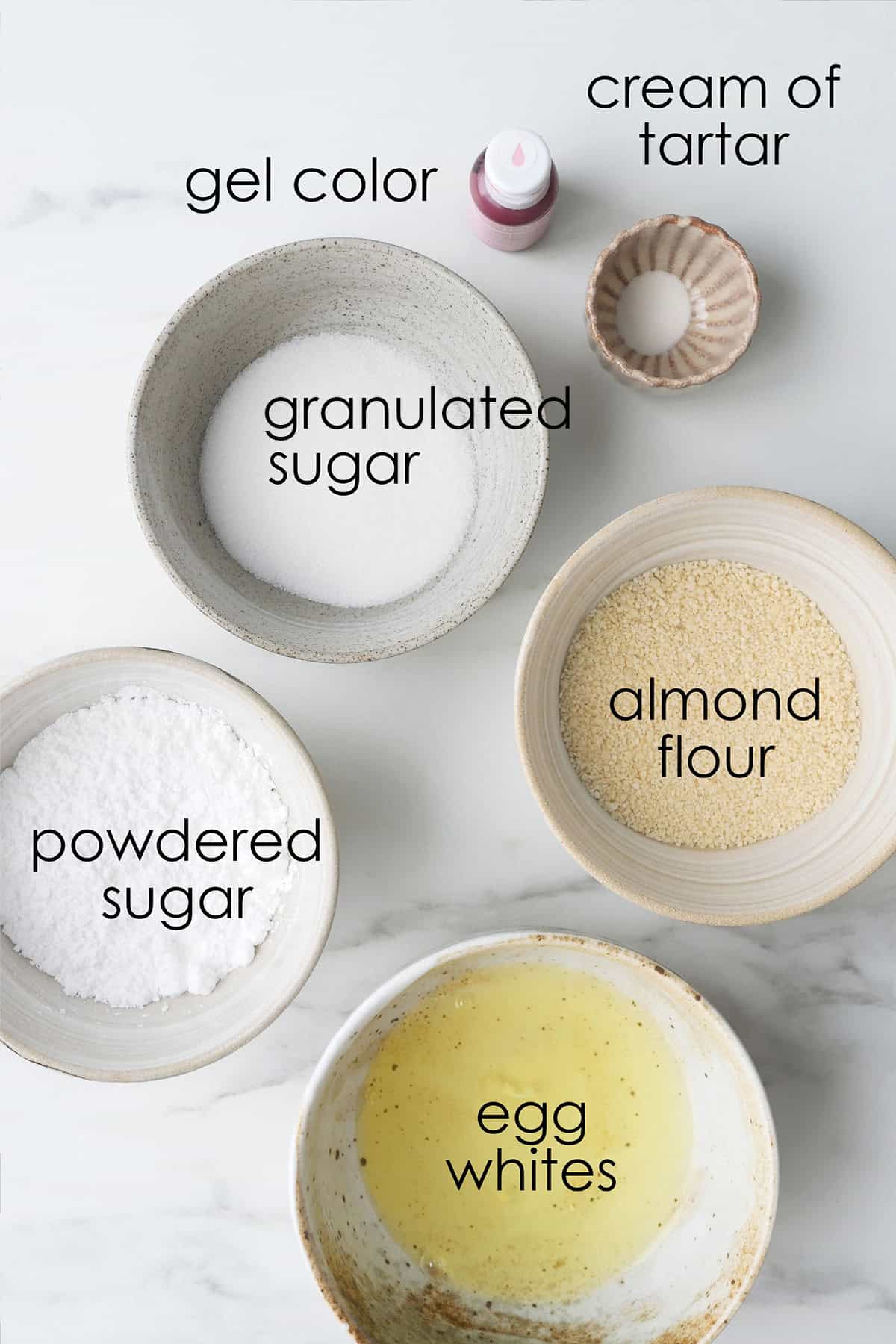

Oven Adjustment Methods
Baking Time and Temperature
Macarons can be over baked/under baked and feet development can be overdeveloped/underdeveloped if the baking time or temperature is not well aligned. For over baked shells or over developed feet, the temperature is probably too high causing it to bake too quickly. You will also find that feet which develop quickly and outwards are also victims of over folding and overly hot oven temperatures. The high heat forces the feet to develop much too quickly and it has nowhere to go except up and out. On the other hand, under baked shells and under developed feet (not a lack of feet due to wrong folding techniques, just underdeveloped), cannot fully reach their full potential when the oven temperature is not high enough.
Learn to adjust the temperatures in your oven. To compensate for adjusted temperatures, you will also need to readjust the baking time and vice versa. For temperature increases, baking time should be decreased. For temperature decreases, baking time should be increased. However, baking at lower temperatures may sometimes result in an undercooked shell and baking at higher temperatures may cause shells to brown. If that is the case, try adjusting the rack position as outlined in the next section.
Baking Time and Temperature Relationship
Macaron Baking Time and Temperature Relationship
↑ Increase temperature - ↓ decrease time
↓ Decrease temperature - ↑ increase time
As a starting point, for every 25 F increase or decrease, compensate with a 2-3 minutes change in baking time in the inverse direction.
Some Recommended Baking Temperature and Times
350 F for 10 minutes - suitable for spacious large ovens
325 F for 12-14 minutes - standard starting point for my recipe
300 F for 16-18 minutes
275 F for 18-20 minutes - suitable for smaller ovens with small compartments
These temperatures are for conventional ovens without convection setting. Usually, it is recommended to decrease the temperature by 25 F when using the convection setting.
Rack Position
The middle rack is often the "default" position in any oven. It's ideal for most foods since it allows the hot air to circulate evenly around the food, resulting in balanced heat distribution. Most recipes recommend that you bake your macarons on the middle shelf. However, you may need to adjust this depending on where your heat source is coming from and your own individual problems.
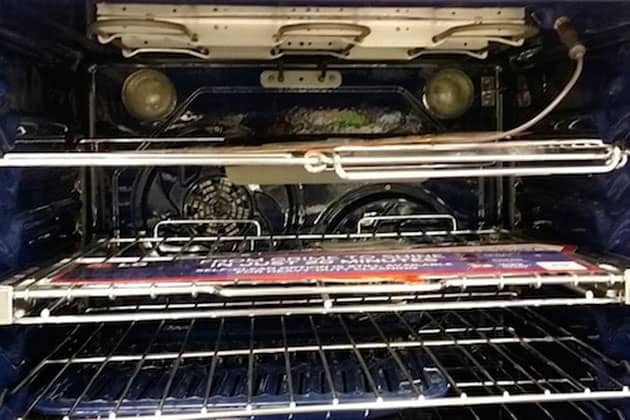
Browning of shell top due to broiler's heat source from the TOP of the oven without convection fan: If the tops of your macarons are browning too fast before the centre is fully cooked, try moving your macarons to a lower rack until the feets develop. Then, place an empty tray on the rack above the shells to shield them from the heat.
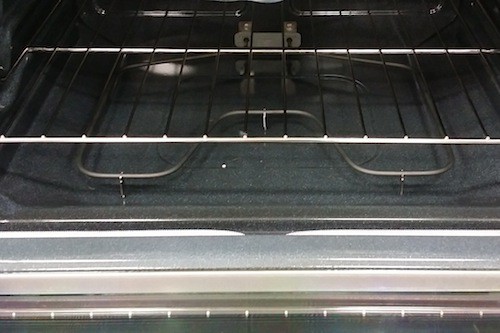
Shells browning on bottom due to heat source from the exposed bake element at the BOTTOM of the oven without convection fan: If your macarons are browning on the bottom before the centre is fully cooked, try moving the macarons to a higher rack. If that alone doesn't help, you can try adding an extra tray immediately below the current tray to prevent it from heating up too quickly.
Convection vs. True Convection
A regular convection oven features a fan which helps to distributes the air around the oven. A "true convection" (a.k.a European convection or third-element convection) utilizes an additional heating element behind the fan to blow heated air to your dish. This method produces more even heat distribution and better baking results.
Using the convection fan
I have become a recent convert to the convection fan since I have found that the temperature remains consistent throughout the baking process with only a 5 degree variance. The fan helps to distribute heat more evenly throughout the oven cavity so you may even be able to bake several trays at once. The heat reaching your macarons may be increased and you may need to decrease the temperature or baking time. As a starting point, it is usually recommended to decrease the temperature by 25 F when using the convection setting.
On the flip side, some bakers may find that their convection fan is a little too strong and causes the macaron shells to become lopsided. You can consider turning on convection cooking during the latter part of the baking period since your shells will already be stronger at that point than when they were wet. If that doesn't help, you may need to skip using the fan altogether.
Having said all that, a convection fan is not necessary when using your home oven for baking macarons. It is a nice added bonus to keep the heat distributing evenly and consistently. You can still achieve this by using other baking tweaks and the proper heat conducting kitchen tools which will be outlined below.
Hot-Preheat Method
If you're still having trouble using a slow and consistent temperature method, try the hot-preheat method. Increase the oven temperature 50 degrees more than the usual baking temperature during the preheat. Once it has reached that temperature and you're ready to bake, turn it down to the regular baking temperature once you place your trays inside. You will need to compensate for this increase in temperature by baking it a shorter amount of time.
This method allows your shells to develop feet from the exposure to the initial high heat but lets them finish off at a lower temperature to avoid browning and over baking. You'll need to be careful of this though as home ovens can cycle hot and cold before it ever reaches your desired temperature so adjusting the temperature mid-way in the baking process may not really change the temperature as you'd hope it would. Read this post on finding a consistent oven temperature.
Reduce Oven Moisture
In Pierre Herme's Macarons book, he advises to open the oven door near the end of the baking time after the feet have developed to let out the steam. Personally, I have never had to do this. I rarely open the oven or turn my trays because I prefer to keep the oven door closed so the heat remains consistent but if this is an area of concern for you, you can also keep the oven door ajar for the whole or for a duration of the baking time by propping a wooden spoon in between the door. You will need to compensate for the loss in heat by increasing the oven temperature.

Good Oven Practices for Baking Macarons
Always Pre-Heat Oven and Use an Oven Thermometer
Always Pre-heat your oven to the correct temperature before placing your trays inside. Place an external oven thermometer inside the oven to ensure that the temperature is correct. Many bakers assume that their ovens are at the correct temperature when in fact, it has increased or decreased during the baking process without their knowledge.
You don't need a fancy thermometer, just a simple hanging one like this one will do. I like that it is small and saves space because it can be hooked on the upper tray. Did you know that the temperature during the initial period of pre-heating is the most unstable? Read my other post on Maintaining a Consistent Oven Temperature.
Identify Hot Spots in Your Oven:
If you are getting uneven results from the same tray of macarons - some are browner than others or some are under baked - you may be facing an issue of hot spots in your oven. You'll need to avoid placing macarons in those areas and rotate your tray throughout the baking time to achieve more even heat distribution.
A great way to identify the hot spots in your oven is to bake several slices of white bread on a tray until it turns brown. You can then see if they have all browned at the same pace or if some are browner than the others.
Bake One Batch at a Time:
I do not recommend baking several trays at once until you have already found the optimal conditions in your oven to bake a perfect batch. Until then, it would be difficult for you to determine why your macarons did not bake successfully. When you bake several batches at once in a small home oven, sometimes heat cannot be evenly distributed to all the shells at the same time. Also, if you are baking on different racks, you would be forcing your macarons to be closer to or further away from a heat source than you'd like. Although not advised for new macaron bakers, if baking several batches at once, try to: alternate the trays midway into the baking time or bake 2 trays on the same rack instead of on different racks. If you have a true convection oven, baking several trays may be easier with the convection setting.
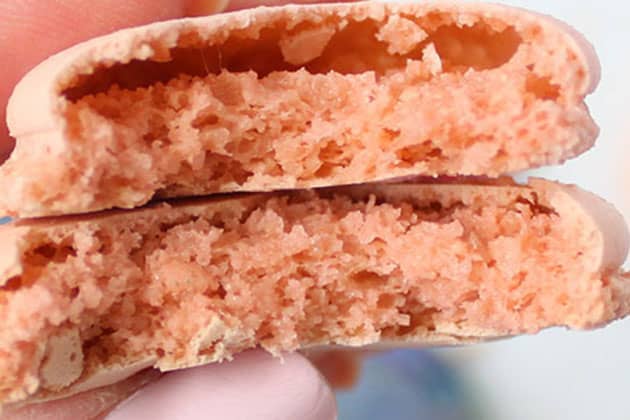
Avoid Hollows
Hollow macaron shells are a result of a combination of poor batter preparation and not enough heat distribution during baking. To combat the latter, use good heat conducting equipment and increase the temperature or baking time.
Check that your baking pan is conducting enough heat to your macaron shells to help it rise. I like using these rimless aluminized steel ones because it conducts heat evenly and allows for good airflow. It is also very sturdy and doesn't buckle easily, preventing lopsided macarons.
A way to encourage heat transfer from the pan to the macarons is to use parchment paper or Teflon sheets instead of silicone mats. I like silicone mats because they keep the macaron shapes from spreading. I only use Silpat branded ones because they are guaranteed to be made from food-grade materials and they conduct heat well.
Lastly, to maintain a consistent temperature inside the oven, try keeping a pizza stone inside the oven on a lower rack from the macarons. I wrote a whole guide on How to Prevent Hollow Macarons if you're interested in reading more about this.
Summary of Macaron Troubleshoots Due to Oven Conditions
(Complete macaron troubleshooting here):
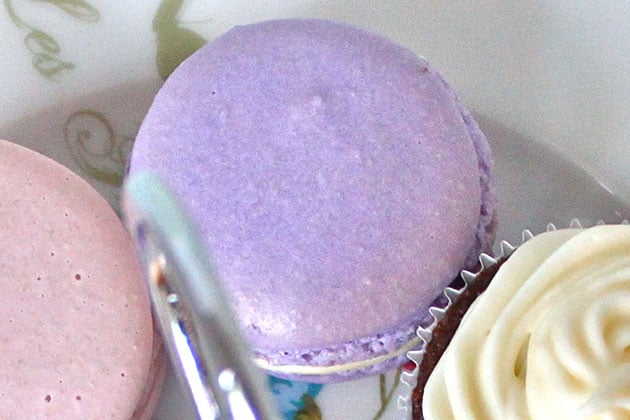
• Shell top is browning:
- move further away from heat source
- decrease temperature, increase time
- shield macarons with empty tray on rack above
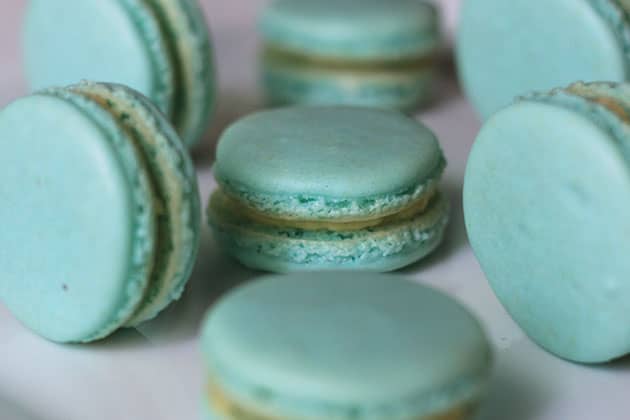
• Shell bottom is browning:
- move further away from heat source
- decrease temperature, increase time
- add double pan on bottom
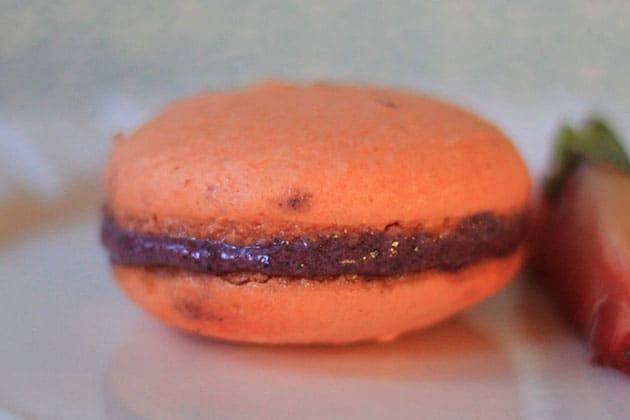
• Shell is undercooked or feet is under-developed:
- move closer to heat source
- increase baking time
- increase temperature
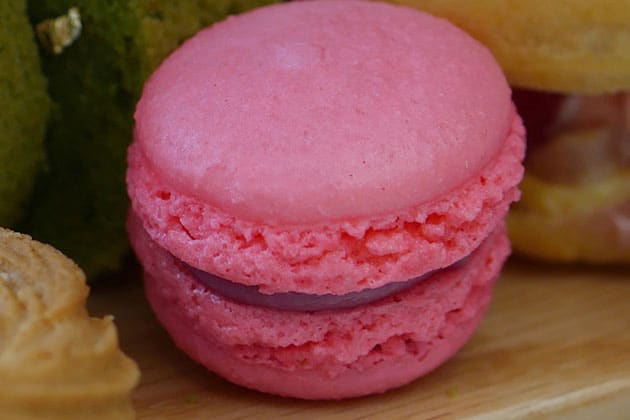
• Shell is overcooked/dry or feet is over-developed:
- let macaron mature 24 hours or more after filling
- brush same flavoured syrup or milk on bottom of shells
- next time, turn down heat or move away from heat source
- stop whipping egg whites once it reaches stiff peaks
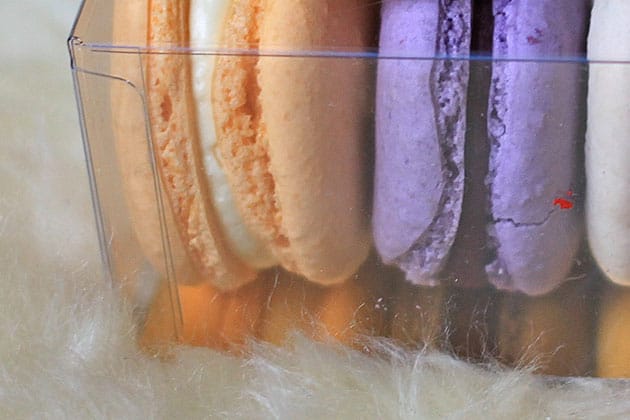
• Shell is lopsided:
- avoid using convection fan if thats the culprit
- avoid using fans the blow directly onto macarons while waiting for skin to develop
-use the range hood fan instead to dry out piped macarons
- consider using a silpat mat instead of parchment paper
- incorrect piping techniques
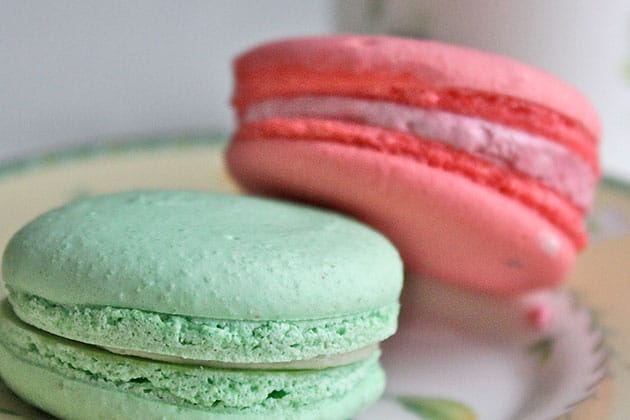
• Inconsistency in the same batch:
- identify hot spots in your oven
- bake only one tray at a time until you find the optimal baking time/temperature
- for trays baked on different racks, alternate the trays midway into the baking time
- ensure batter is fully incorporated before piping
I hope this post on how to correctly use your home oven for baking macarons. Let me know how yours went.
Happy Baking to You!
XOXO, Mimi
Note: This post was originally published on October 1st, 2014.

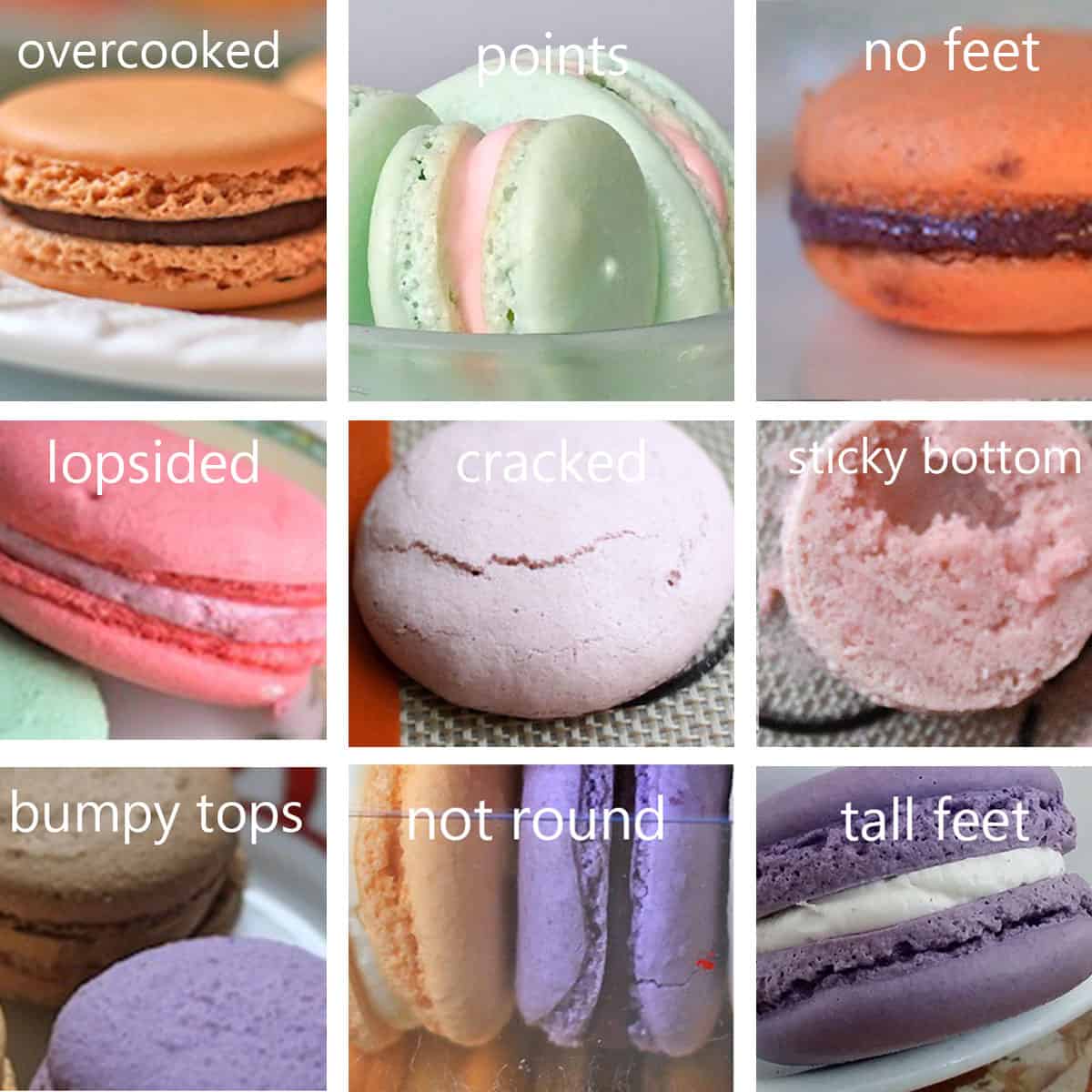


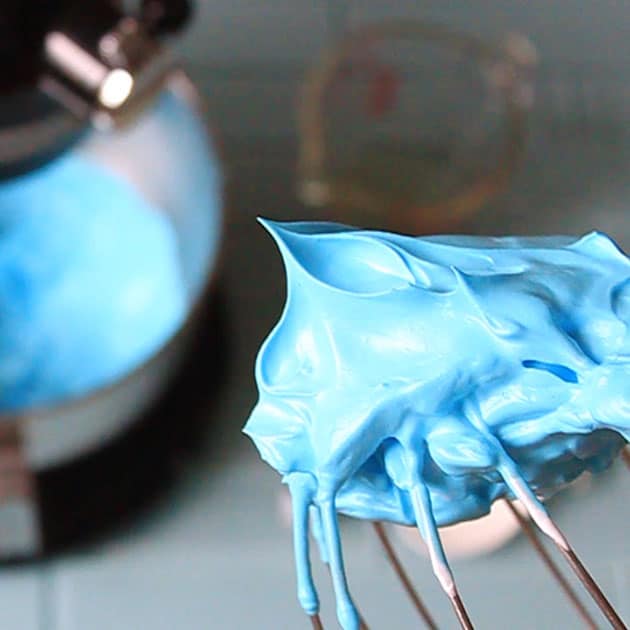
Leave a Reply